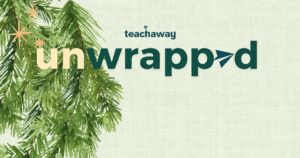When educators set out on their career path, they do so with intention. They aim to be the best teacher they can be to provide students with the knowledge, guidance, and passion required to achieve academic success.
This primary goal is often at the forefront of educators’ minds: Be a good teacher and help students succeed. While that’s a good starting point, each year you teach may differ. Things change, student engagement may require different approaches, and no two school years will ever be the same.
That is why it’s crucial to set attainable teacher SMART goals.
What are SMART goals in education?
SMART goals are there to help you advance your skillset and professional development while making a difference in the lives of your students every single day. SMART is an acronym that stands for the five facets of goal setting: Specificity, Measurable data, Achievability, Relevancy, and the Time limit you give yourself to complete your own goals.
Suppose you want to improve your students’ abilities to discuss course material in a free-flowing way. In that case, you may implement a weekly discussion for the remainder of the year. This type of goal falls under all categories of smart goals.
If you aren’t sure where to start with your SMART goals, know that they fall into four specific categories:
- Improving the organization of your classroom
- Using class time in a productive way
- Encouraging more student engagement
- Helping to strengthen student discussion about the course material
Read through the SMART goal examples below to find possible programs you can implement to smash your teacher goals.
What are some examples of SMART goals for teachers?
S – Specific
Specific goals are designed to answer five questions:
- Who is involved?
- What do you want to achieve?
- Where will you achieve the goal?
- When do you want to achieve the goal?
- Why do you think this goal is helpful?
Since you know the answers to several of the questions already (i.e., where it will be done and who will be involved), as an educator, you need to focus on what you want to achieve with your teaching goals, why it’s helpful, and when you see yourself completing the goal.
One example of a specific goal you can set for the next year includes getting involved in extracurricular activities to help build a strong foundation of interaction with your students.
M – Measurable
A measurable goal relies on data to ensure that what you’re doing is working for you in terms of the plan you set and what you want to achieve. Measurable goals ask you to keep track of the following:
- How much improvement do you want to see
- Setting a goal that has a clear timeframe
- Data that can be used to mark progress toward the goal
Educators can use measurable goals to help their students improve in their studies. For example, say you want to raise the class’s average GPA from 2.5 to 3 before the end of the spring semester.
This goal is measurable because you know the improvement you wish to see student progress from the start to the end of the school year. To stay on track for this goal, you can implement different progress points by adding quizzes throughout the semester to your lesson plans and encouraging students to attend an after-school tutoring session with you if they aren’t quite where they’d like to be academically.
A – Achievable
You need to set achievable goals. That means being realistic about where your class is in their studies and the resources you have available to you to make it happen. You want to be challenged by the goal, but you don’t want to put yourself in a position where it would be nearly impossible to achieve.
For example, every educator’s dream is to see their students succeed in class. Does that mean you should set the goal of ensuring everyone gets an A this semester? Probably not. It’s not impossible. However, it can put unneeded pressure on students to perform at a level they’re incapable of. Not everyone can get an A, even if the teacher does everything to ensure students thoroughly understand the syllabus.
An achievable goal that may challenge both teacher and student is eliminating phones or other electronics during class. This gives people a chance to discuss ideas, think critically about subjects, and come to an answer on their own without the use of Google. Try to do this during one class per week, opening the floor for more curiosity around the subject being taught instead of simply reading and retaining information.
R – Relevant
Teacher SMART goals must be relevant to learning and your career. These goals are designed to align with your broader goal of being a great teacher and helping students succeed.
This year, why not try advancing your skillset to better serve students by taking additional teaching courses? These courses will help you with professional goals, like career advancement and increased pay, and give you more insight into what it takes to truly make a difference in your students lives.
You could also develop new skills outside courses that can help with teaching, such as “thinking outside the box.” Suppose you want to be more imaginative in your approaches. In that case, you can hone this skill by getting together with other educators for brainstorming sessions on how to teach children specific subjects better. You may be surprised by what insights you can learn from getting another teacher’s perspective.
T – Time-bound
Finally, to set an effective teacher SMART goal, you must give yourself a deadline. For most, that deadline will likely be the end of the semester or the beginning of the next school year. Regardless of when you set it, it would be best to give yourself a sense of urgency to get it done without keeping it too open so you can drag your feet with completing it. One example of a time-bound goal would be the use of specific technologies. Various apps and digital programs can be used to help further education, but knowing which one to pick can be overwhelming.
One goal you can implement that will help you is picking the right app for you and your teaching style. Say you want to provide an easier way for students to communicate about classroom discussions while at home studying or doing homework.
You can find a good communication app, such as WhatsApp, that allows all students to join a group chat with you. That way, you will all be able to keep the lines of communication open during more stressful times, such as end-of-the-year exams.
How can teachers set SMART goals for themselves?
SMART goal setting may seem a little daunting at first, but you’re much more likely to achieve your overall goal of educator’s success when you break things down and achieve small goals throughout the year.
If teacher development and career growth are any of your teaching goals this year be sure to learn more about Teach Away’s courses and certification programs, like TEFL certification to teach English as a second language, the teacher development program, or the teacher certification program.
Get started with accomplishing your teacher goals for the best year ahead.



